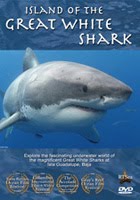 ***News of the Hour from Chile***
***News of the Hour from Chile***The 33 miners in Chile, who have been trapped 2,000 feet below for nearly 70 days, are now, one by one, reaching the surface. A nation's compassion, determination, and technology have all come together to rescue these men and unite them with their families. A joyous moment and a reminder of what can be accomplished when we set about to preserve life.
Whale Fatalities Spike Along the Calif. Coast
While a certain number of whale deaths are recorded along the Eastern Pacific coast annually, this summer and early fall have seen a record number in the San Francisco Bay area. Since last July, there have been five dead whales sighted or washed ashore, including minke, fin, humpback, and blue whales.
The latest fatality was found on the beach in Pescadero on October 2nd: an 80-foot long blue whale with a male fetus lying beside it. The blue whale can reach over 100 feet in length, making it the largest animal on the planet.
Scientists and officials from the Gulf of the Farallones Marine Sanctuary see ship strikes as the cause of death. The determination was derived from either finding severe wounds from propeller blades or from necropsies that revealed broken bones from the impact of the ship.
"We're definitely seeing an increase in ship strikes - it's awful," said Mary Jane Schramm, spokeswoman for the Sanctuary.
While the cause of death id fairly certain, the larger question is whether this series of deaths represents a statistical anomaly or has something put whales in the region at greater risk? One likely candidate being considered is a greater than usual amount of krill in the area.
Krill, a name given to a group of small shrimp-like crustaceans, is the primary food source for baleen - or filter-feeding- whales like blues and humpbacks. Apparently, this summer has seen a
 larger population of krill and this may have attracted more whales into the area. (Living in Southern California, I have heard accounts from many fishing and whale-watching boats of record numbers of blue whales passing close to shore.) With San Francisco being the busy shipping port that it is, this could increase the odds for a collision between a whale and a large freighter. As big as they are, whales are no match for tons of floating steel.
larger population of krill and this may have attracted more whales into the area. (Living in Southern California, I have heard accounts from many fishing and whale-watching boats of record numbers of blue whales passing close to shore.) With San Francisco being the busy shipping port that it is, this could increase the odds for a collision between a whale and a large freighter. As big as they are, whales are no match for tons of floating steel.But an exact reason for the krill explosion has not been determined. Krill feeds on phytoplankton and this food source can produce "plankton blooms" when warmer conditions prevail. If there is a climate change connection, no one can say with any certainty at this point.
Regardless of the root cause, what is needed is to devise solutions that could help prevent collisions and save the lives of these fragile whale populations (blue, humpback, and fin whales are all listed as endangered). Stationing monitors in the shipping channels and outfitting ships with sound systems that would alert the whales to their approach have been proposed by several groups including the Gulf of the Farallones Marine Sanctuary.
All that is needed is the compassion, determination, and technology.
Read more in The San Francisco Chronicle.







No comments:
Post a Comment